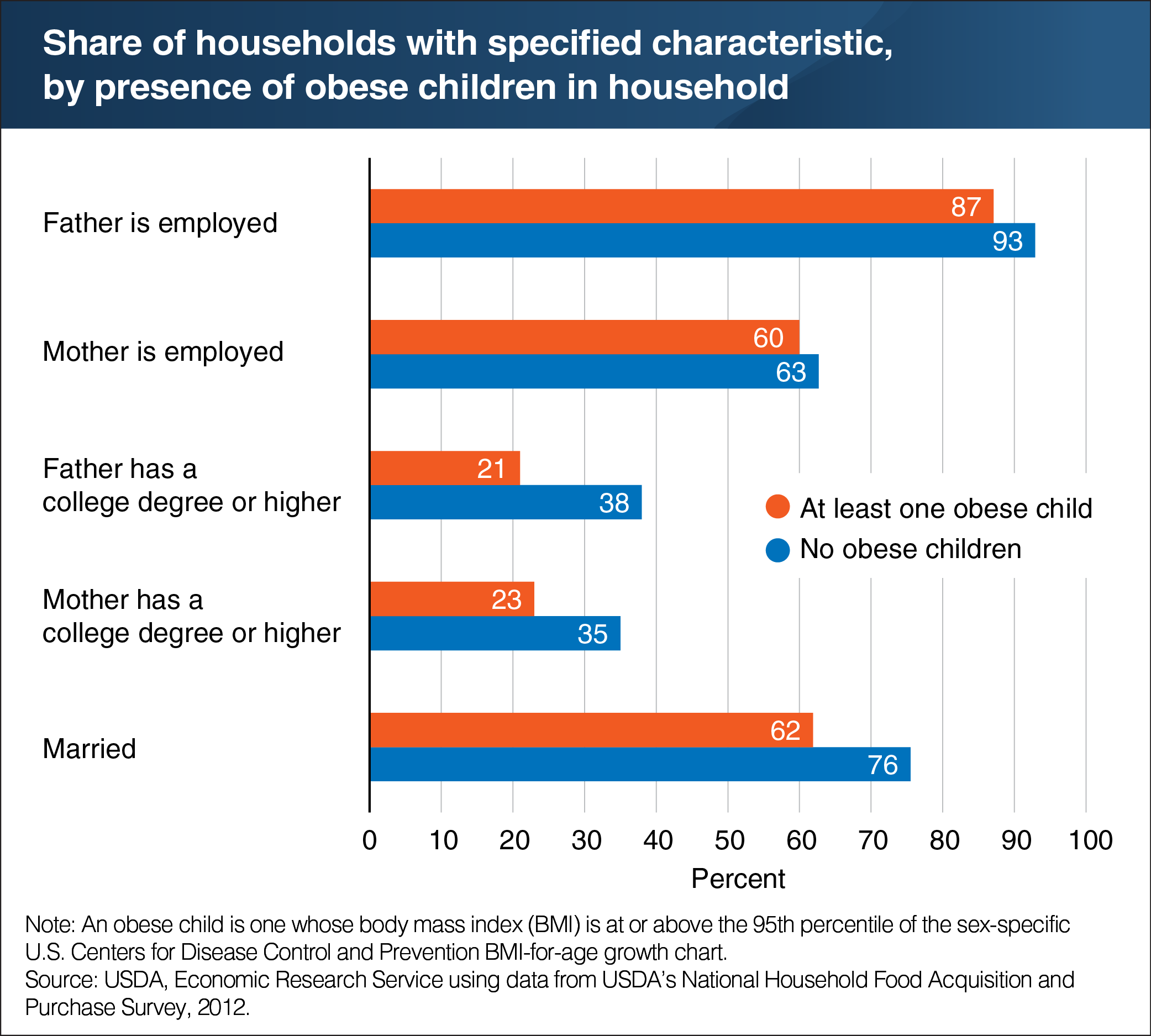Households with obese children differ from those with no obese children
- by Young Jo
- 1/4/2018

A recent ERS study used data from USDA’s National Household Food Acquisition and Purchase Survey (FoodAPS) to look at how households with at least one obese child differ from households without any obese children. The study found that the parents with obese children were less likely to be married, employed, or have a college degree. For example, the shares of fathers and mothers who were employed were lower among obese-child households (87 percent for fathers and 60 percent for mothers) relative to parents in nonobese-child households (93 percent for fathers and 63 percent for mothers). In addition, less than a quarter of fathers and mothers had a college degree or higher among obese-child households, whereas more than one third of fathers and mothers had the same level of education among nonobese-child households. A version of this chart appears in "Households With at Least One Obese Child Differ in Several Ways From Those Without" in the December 2017 issue of ERS’s Amber Waves magazine.

